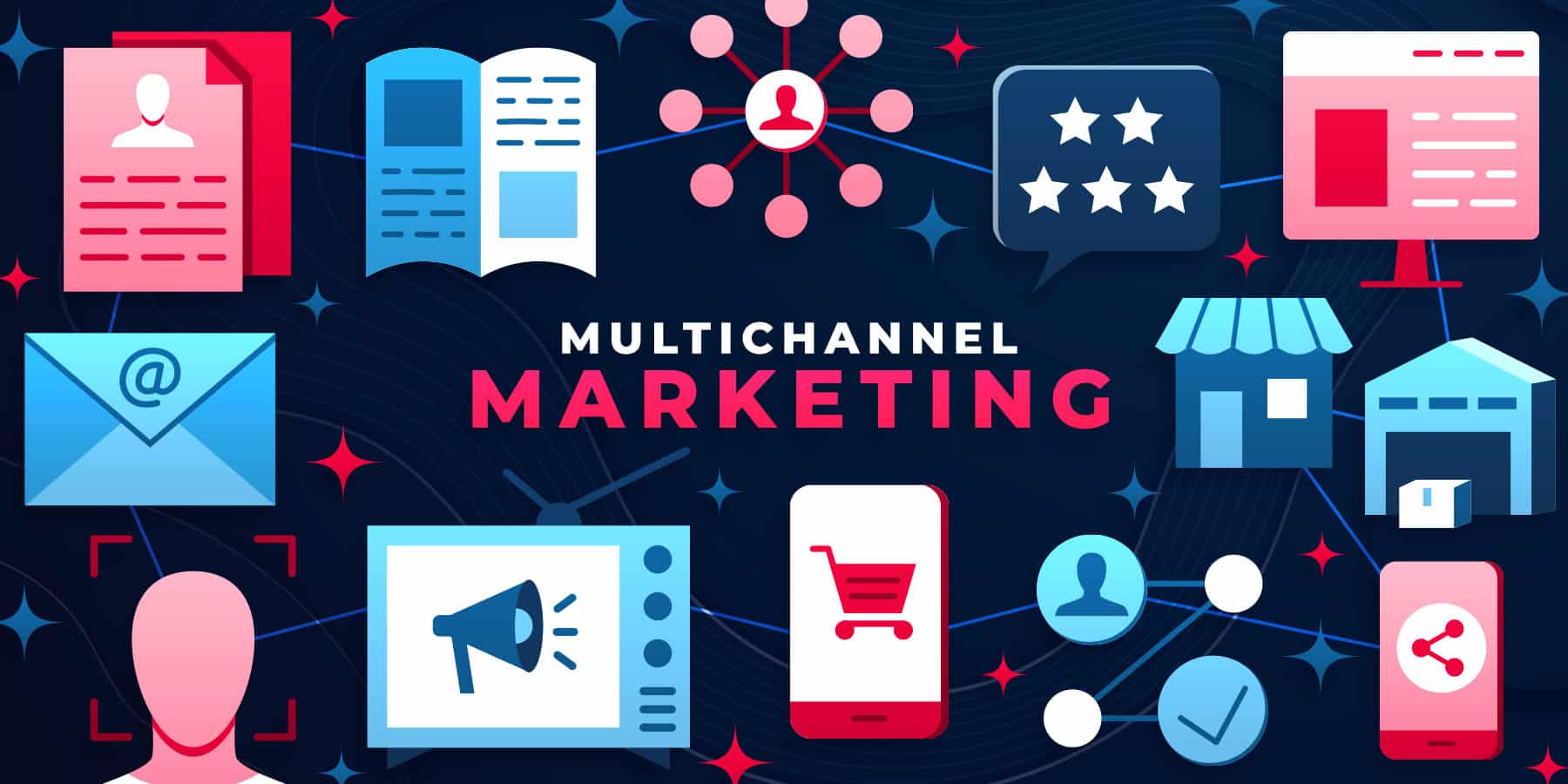Key Takeaways:
What multichannel marketing is
One of the top challenges of multichannel marketing
The importance of making lists of your marketing channels and channel assets
How to leverage multichannel layering when planning for a marketing event
You might be familiar with the phrase “multichannel marketing”. But do you know what it means or how you can start tapping into this superpower for your small business? Here’s an overview of what multichannel marketing is and some simple ways to implement it to grow your business’s impact.
Defining Multichannel Marketing
Multichannel marketing is about looking at everything from every angle. It is clear, consistent messaging on all your marketing platforms.
To really understand multichannel marketing, it’s important to grasp how communication flows in a digital first world. Multichannel marketing involves constant communication. There are four roles that play a part in the digital communication: the sender, the message, the channels, and the receivers.
From a small business perspective, you and your team are the “sender”. Your brand’s messages are any type of image or content-based communication you release via channels like social media platforms, marketing emails, blogs, digital ads, and your website. Your “receivers” are the staff and clients who are absorbing your business’s messages.
Multichannel marketing is about looking at everything from every angle. It is clear, consistent messaging on all your marketing platforms.
One of the Top Challenges to Multichannel Marketing
There’s one challenge to multichannel marketing to be aware of, however: noise. Noise is anything that gets in the way of people receiving and fully absorbing your business’s messaging. Things like smartphone notifications, an overloaded email inbox, or back-to-back meetings. Or the “din” that comes from being bombarded by ads and messaging from countless companies. At the time of writing, the average American sees 4,000-10,000 ads per day. (To put that in perspective, that’s more than five times as many ads as the average American saw in the 1970s.)
Noise can also refer to anything you’re doing internally that distracts from your brand’s message. This can happen when your business floods consumers with too many ads, eblasts, videos, and other types of correspondence. Prioritize quality communication rather than quantity to steer clear of this common marketing pitfall. Strive to offer your audience value (and something unique that makes your brand stand out from the competition!).
Take Inventory of Your Business’s Marketing Channels
Every small business has a different set of marketing channels. It can be helpful to sit down and write a list of all the channels YOURS is using. Here are some common outlets you might be using to share your message with your audience:
- Website
- Search
- SMS/Texts
- Phone
- Social Media
- Messenger
- Video
- Offline
- Your Team
- Radio
- Partnerships
- Billboards
- Your Store
Make a Channel Asset List
It’s important to make a list of all the assets you’ll need for each of your channels. This ensures that you have the tools and resources you need to communicate your message clearly and consistently on ALL your channels. Here are some items you might include on a channel asset list: copy, photography, video, design, technology, and people (e.g., determining if certain staff needs extra training or resources; or designating a certain person on your team as a lead for posting on a particular social platform, etc.)
Do Some Multichannel Layering
After you’ve made a list of all the channels your brand is using, it’s time to do something called “multichannel layering.” It’s basically just taking a step back and understanding all the places everything is going, so you know what you need to create for a particular multichannel campaign. We recommend planning out the schedule for each channel six to eight weeks before an event – whether the event is a sale, new product release, or some other promotional event.
For instance, your multichannel layering timeline might look like focusing on billboard ads and website banners six weeks out and digital ads five weeks out; and spreading out email campaigns every couple of weeks until the event date. Social media and Google Business posts are two channels you might emphasize one to two weeks before the event.
When you’re doing things on multiple channels, it’s important to step back and understand all the places everything is going — and what you need to create. This is called multichannel layering. We recommend planning out the schedule for each channel six to eight weeks before an event.
Remember That Clarity and Consistency Are Key
Regularly review and monitor your channels for clarity and consistency. Go through your channels one at a time to see if your messaging is the same and has the same feel from a customer’s point of view. We recommend recruiting some team members and an actual client to do this same exercise and share their feedback with you.
In addition, confirm that your brand’s QR codes work, hyperlinks are functioning, and store coupon codes work. Ensure that the business hours you list on your website are the same as those you have on your Facebook and Google business profiles.
Multichannel and More
Need some help expanding your business’s channels to enhance your reach? Check out our 6-week virtual Creating Your Multi-Channel Marketing Plan training or contact us about marketing coaching for you and your team!
Evaluate Your Multichannel Marketing with a TTG Pro
Not sure if your marketing channels are performing at their best? Invest in a TTG audit to gain the clarity and direction you need to level up your business.





